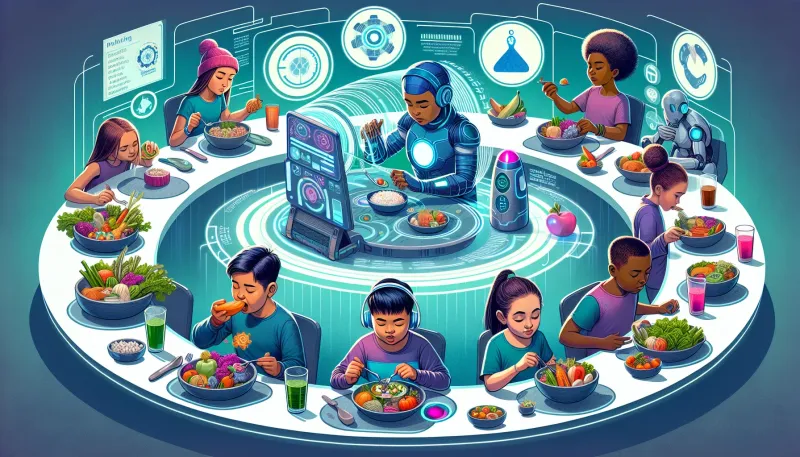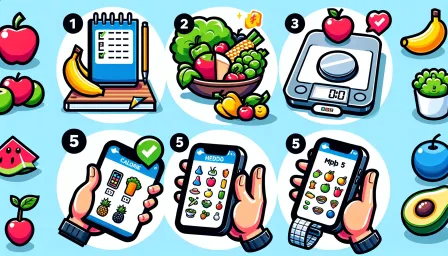Mindful Eating for Kids: 10 Easy Tips for Healthier Habits

Learn how mindful eating for kids can lead to healthier habits. Discover 10 easy tips to incorporate mindfulness in children's eating routines for better nutrition and well-being.
Introduction
Mindful eating for kids is a practice that encourages children to focus on their eating experiences, understanding hunger and fullness cues, and making thoughtful food choices. By cultivating these habits early on, children can develop a healthier relationship with food, potentially preventing issues such as obesity and eating disorders. In this article, we will explore ten easy tips to help your children practice mindful eating and build healthier habits.
What is Mindful Eating?
Mindful eating involves paying full attention to the experience of eating and drinking, both inside and outside the body. This practice encourages individuals to eat slowly, savor each bite, and listen to their body's hunger and fullness signals. For kids, mindful eating can mean understanding why they are eating, appreciating the food they consume, and recognizing when they are full.
Benefits of Mindful Eating for Kids
- Improves digestion
- Prevents overeating
- Encourages healthier food choices
- Reduces stress and anxiety around meals
- Promotes a better understanding of hunger and fullness cues
10 Easy Tips for Healthier Habits with Mindful Eating
1. Model Mindful Eating Behavior
Children learn by observing adults. Demonstrate mindful eating habits by eating slowly, savoring your food, and avoiding distractions like television or smartphones during meals. Engage in mealtime conversations and focus on the sensory experience of eating.
2. Create a Calm Eating Environment
Ensure that mealtime is a calm and pleasant experience for your children. Minimize distractions and encourage a relaxed atmosphere where kids can focus on their food. A peaceful setting can help children pay better attention to their eating cues.
3. Involve Kids in Meal Preparation
Getting children involved in meal planning and preparation can spark their interest in food and nutrition. Let them help with tasks like washing vegetables, stirring ingredients, or setting the table. This involvement can make them more excited about the meals they eat and more mindful of their food choices.
4. Encourage Self-Serving
Allow children to serve themselves at mealtime. This practice can help them learn to gauge appropriate portion sizes and listen to their hunger and fullness cues. Guide them on how to start with smaller portions and encourage them to take more if they are still hungry.
5. Teach Hunger and Fullness Cues
Help your children understand the difference between physical hunger and emotional eating. Ask them questions like, "How does your stomach feel?" or "Are you hungry, or are you just bored?" Teaching them to recognize these cues can promote healthier eating habits.
6. Offer a Variety of Nutritious Foods
Expose your children to a wide range of healthy foods, including fruits, vegetables, whole grains, and lean proteins. Encourage them to try new foods and flavors, which can make mealtime more exciting and diverse.
7. Avoid Using Food as a Reward or Punishment
Using food as a reward or punishment can create an unhealthy relationship with eating. Instead of rewarding with sweets or treats, consider non-food rewards like stickers, extra playtime, or a family outing. Similarly, avoid withholding food as a form of punishment.
8. Schedule Regular Meal and Snack Times
Establishing a regular eating schedule can help regulate your child's appetite and prevent overeating. Consistent meal and snack times encourage kids to eat when they are genuinely hungry and to avoid unnecessary snacking.
9. Focus on the Meal Experience
Encourage your children to engage all their senses while eating. Ask them about the different flavors, textures, and smells of their food. This practice can make meals more enjoyable and encourage a deeper appreciation for the food.
10. Practice Gratitude for Food
Teaching children to be grateful for their food can foster a positive attitude towards meals. Consider starting a family tradition of expressing thanks before eating, discussing where the food comes from, and appreciating the effort that goes into preparing it.
Conclusion
Mindful eating for kids is a valuable practice that promotes healthier eating habits and a positive relationship with food. By modeling mindful eating behaviors, creating a calm eating environment, involving children in meal preparation, and teaching them to recognize hunger cues, you can help your children develop lifelong healthy eating habits. Follow these ten easy tips to encourage mindful eating and support your child's overall well-being.



























